How Easy It is to Do Half Ironman
So you've signed up for your first Half Ironman, well done! You've got a lot of training ahead of you but you're on your way to accomplishing an incredible feat. But where do you start?
Well, during the three months that I trained for my first Half Ironman – Muskoka 70.3 in July 2019 – one thing I quickly discovered is that there really is an endless amount that you can learn about preparing for and competing in triathlon.
When you talk to experienced triathletes or triathlon coaches about doing your first Half Ironman, you'll geta lot of different advice on all kinds of topics. Training regimen, nutrition planning, race strategy, technique, gear and apparel…everyone's got their own take on the best way to do everything. It can be overwhelming.
Things I wish I knew before my first Half Ironman
My goal with this article is to filter out all the extraneous things that you'll hear about triathlon training and share the most important things that I learned when preparing for my first Half Ironman. Here are my top 10 pieces of advice for someone training for their first Half Ironman.
1. Make a training plan that you're actually going to stick to
A quick Google search will show you that there are tons of downloadable "My First Half Ironman Training Plans" out there. And although these are great for referencing, it's important to understand how the goal of that plan compares to your personal goal. Is your goal to go sub seven hours? Sub six? Just to finish? Setting agoal time is key to finding the right training plan.
From my experience, the best way to set and achieve your triathlon goals is to work with an online triathlon coach. I worked with one when training for my second Half Ironman race and it took my training to new heights. Check out the Case Study inthis article to see how much working with a coach helped me.
Another thing to consider is whether the plan is compatible with your lifestyle. Many of the plans I found required minimum two-hour workouts per day, six days a week. Between work, my unwillingness to completely give up my social life, and my desire to keep my girlfriend happy, this wasn't going to work for me.
Ultimately, the best triathlon training plan is the one that you're actually going to adhere to. Otherwise, if you fall short for a couple of days then there's a likelihood you'll get overwhelmed and give up entirely. For that reason, I recommend building your own plan that is a balance of something that will push you, but is also achievable.
For your reference, I trained for 12 weeks leading up to my first Half Ironman (not a ton of time), and this is what my typical week looked like:
Monday: Long run
Tuesday: Morning Spin Class
Wednesday: Short Run
Thursday: Morning Spin Class, Evening Yoga Class
Friday: Weights or Swimming
Saturday: Long bike ride outside
Sunday: Chill
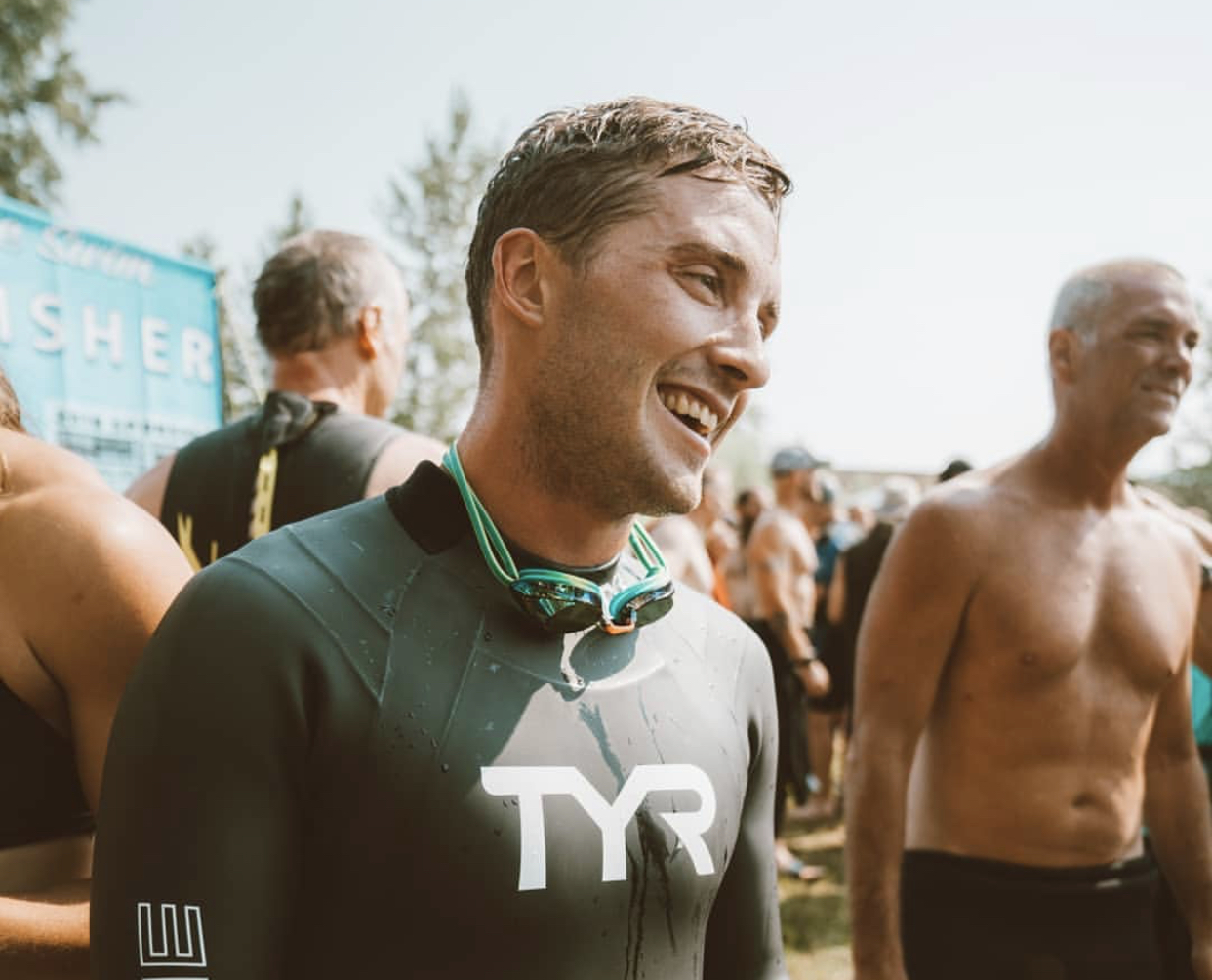
2. Train the least on the Swim
As you can see from my training plan, the swim was not a huge point of focus for me. On average I swam probably once every two weeks. This was a conscious choice, and the reasoning was twofold.
First off, swimming in the pool can be painfully mind-numbing. Length after length staring at the black line…seriously, it's 2019 and I still can't watch Sportscenter on the pool floor?
Secondly, having a great swim vs a good swim will save you 5-10 minutes on the Half Ironman distance. Over the course of many hours, that's not a huge impact, especially considering you can save 30-60 minutes on the bike, or 20-40 minutes on the run. For that reason, I focused more of my limited training time on the second two disciplines.
I'm a confident swimmer overall – shoutout to my mom for dragging me to a decade of swimming lessons as a kid – so I did just enough to ensure I could put down an average swim on race day.
Obviously, if you're a less confident swimmer, make sure to do enough to get to where you need to be. But if you've got limited time to train, swim training is where I would sacrifice.
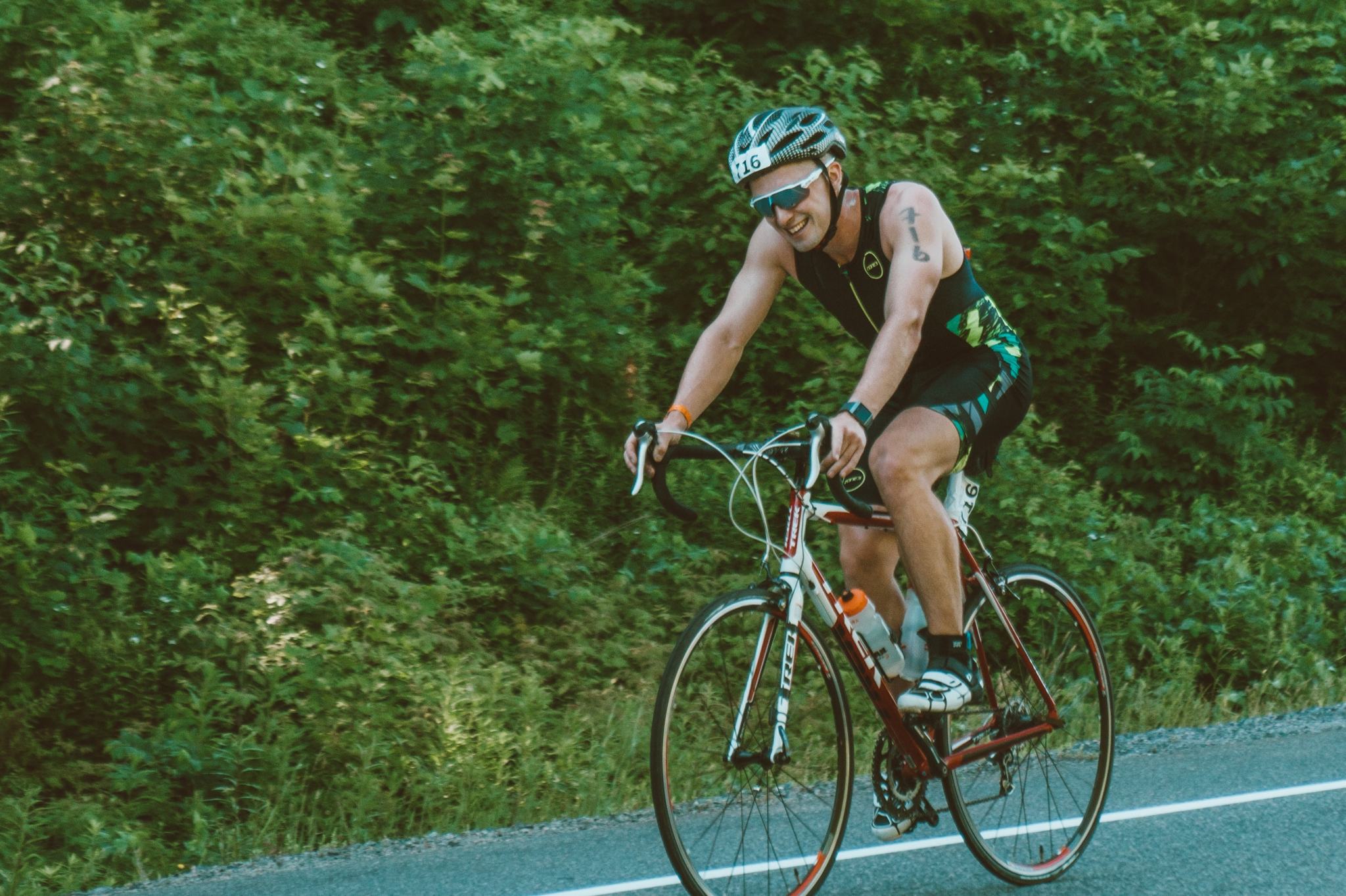
3. Train the most on the Bike
The bike is where you can make the biggest impact on your overall time. This is where you'll (hopefully) spend the most time on race day. For many people, the bike is 50% or more of their total race time. So it makes sense that this is where you should train the most.
I typically biked three times a week: two 1-hour spin classes during the week, and one long ride outside on the weekend.
Between planning a route and dealing with weather, it's not always easy to hop on the bike and go out for a ride. Therefore, spin can be a very convenient way to get some solid riding in. Plus, with scheduled classes and a paid membership, it really holds you accountable to your bike training.
I was lucky to find a spin class that was taught by a triathlon coach. His classes were very technical, focusing a lot on heart rate zones, intervals, and form. I made a ton of progress in my cycling over the course of three months, culminating in a strong bike time on race day. Spin was a key factor in that.
For outdoor rides, always get out and ride with a buddy, a cycling club, or triathlon club. It's much safer when you're riding on roads and also helps the time go faster when you have a friend to talk to.
4. Develop a race day nutrition plan…and stick to it!
Working out intensely for hours on end is not normal for humans, so we can't expect to maintain energy levels by fueling normally. Having a solid race day nutrition plan is paramount to having a successful race.
Here are my best tips for developing your fuel plan for your first Half Ironman:
- Aim to be consuming around 250 calories per hour. Those calories should be predominantly carbs, as you'll be in carb-burning zones for hours on end.
- You don't really need protein as your body isn't in a recovery zone.That can wait for post-race.
- Fats can be okay if you're in a lower heart rate zone, but they can be harder to digest than carbs, possibly leading to what triathletes call "digestive issues."Carbs are the easiest to digest and are the fuel your body needs.
- Plan to stop at every fuel station on the run course. Not only is this a great way to ensure you're getting sufficient fluids and nutrition, but running station to station also helps to break up the run into 2km milestones, which makes the 21km seem less daunting and gives you a mental boost.
- Don't start refueling until you're 10 minutes into the bike. If you fuel before that, the fuel will likely go towards recovering your arms, which you're not going to need for the next few hours 😉
- The bike is the buffet. You can't refuel while swimming, and refueling while running sucks, so get those calories in on the bike!
- Drink to thirst. Being dehydrated or overhydrated can get you into trouble. Listening to your body and drinking when you're thirsty is the best way to ensure you're properly hydrated for the race day conditions.
- Hydrate with electrolytes. Use a product like Skratch to ensure that you are replacing what you're sweating out.
Below is what my nutrition plan looked like for my first Half Ironman. Personally, I don't like eating while running so I tried my best to fuel ahead of the run by consuming more on the bike.
SWIM:
Nothing, save for a couple of errant elbows from other swimmers.
BIKE:
Three Clif Shots – 20 minutes in, halfway through, and 20 minutes from the end
Two Sleeves of Clif Blocks – 1 block roughly every 15 minutes
Two 700mL bottles of Skratch – passionfruit mmm…
One 500mL bottle of water – because being hydrated is cool
RUN:
One cup of water or warm, flat Pepsi at each rest station. I know, it sounds awful now, but it's the nectar of the gods when you've been grinding for hours on end.
One cup of water dumped on head at each rest station – it was friggin' hot out.
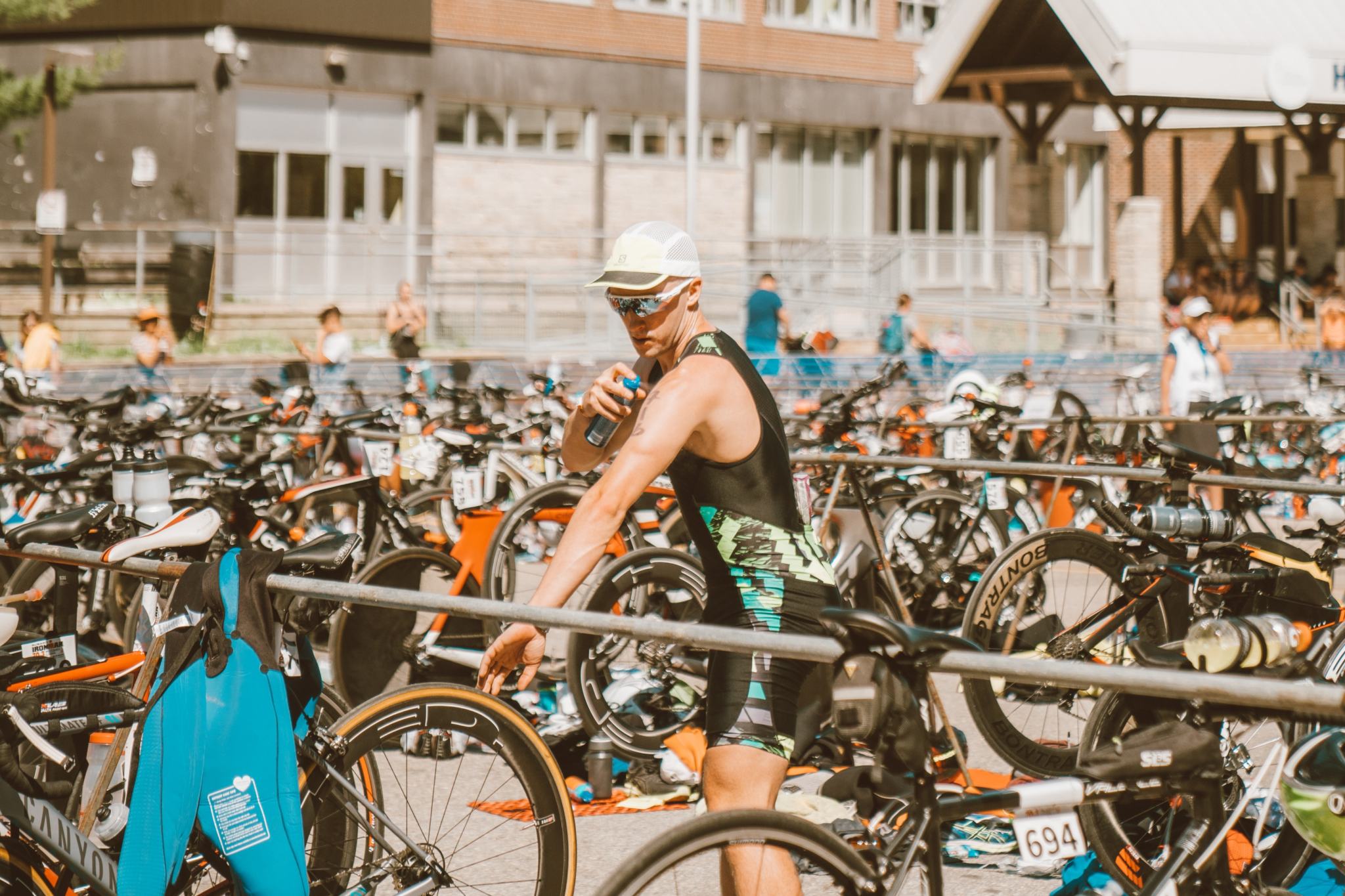
5. Do a practice triathlon first
We talking about practice??
Look, you're going to invest a lot of time – and, in all likelihood, money – training and preparing for your first Half Ironman. For that reason, it's worthwhile to do at least one shorter distance triathlon beforehand to work out all the kinks and give you the best chance of success for the big one.
Participating in a shorter distance triathlon (i.e. an Olympic or a Sprint) beforehand will give you the opportunity to:
- Learn the race day logistics
- Practice transitions in a race setting
- Make adjustments to your nutrition plan based on energy levels or digestive issues
- Understand your race day pace
- Discover any equipment or apparel changes that you'd like to make
- Make friends with other triathletes!
I did an Olympic triathlon in Guelph, Ontario about three weeks before my first Half Ironman. It was hugely beneficial for me as I was then able to walk into Muskoka 70.3 already knowing the drill and focused solely on racing.
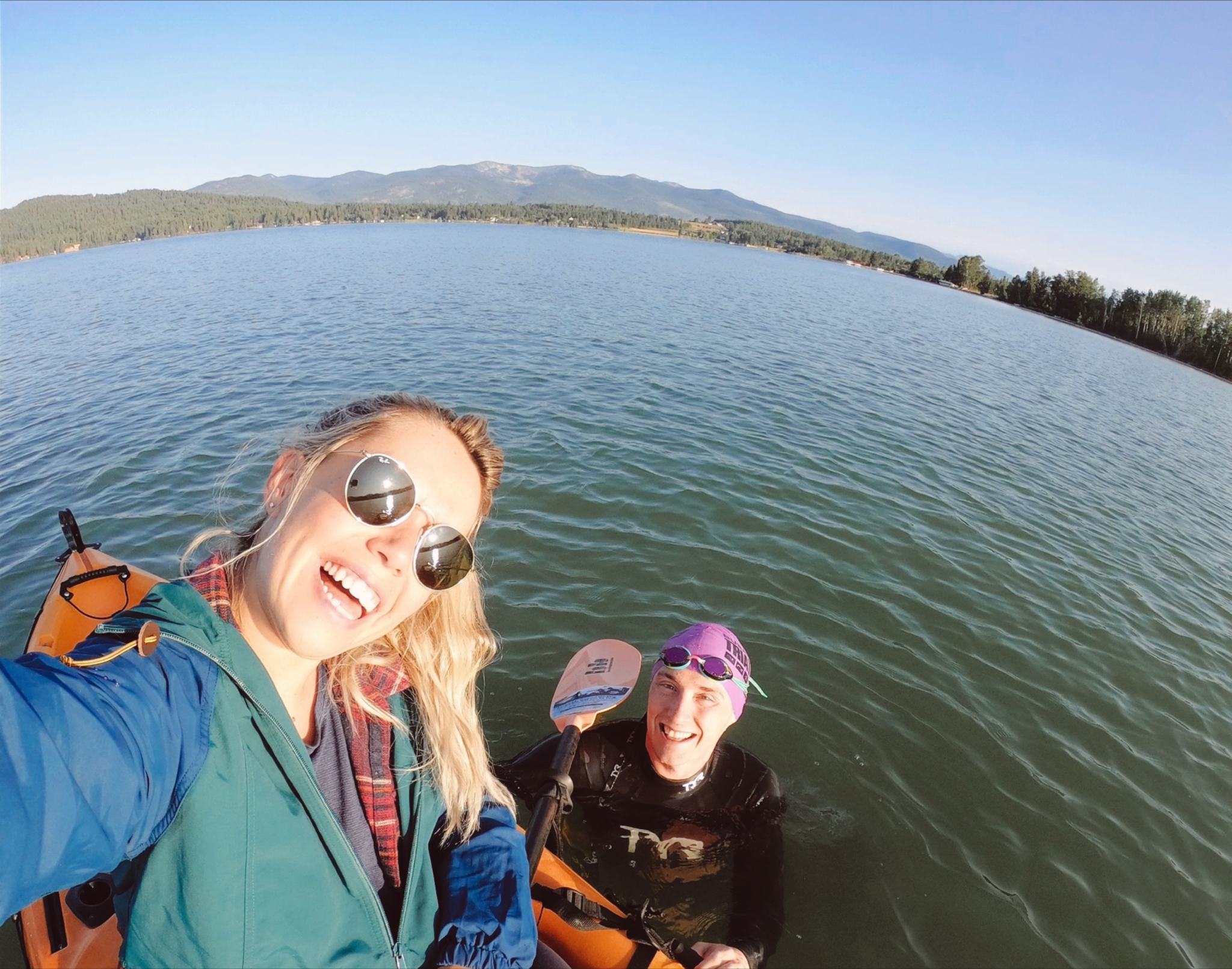
6. Get out swimming in open water
Anyone who has ever done a triathlon will tell you this – because it matters!
Swimming in open water and having to deal with cold, murky, wavy, water isdrastically different than doing laps in your local chlorinated, sheltered, 80 degree community centre pool. It's night and day!
It's important to get out to a lake or river at least once or twice before race day. It's a good opportunity to practice sighting buoys for navigation, swimming in a straight line without that friendly black line, breathing in wavy water, course correcting for currents, and acclimating to your wetsuit.
Be sure to take a friend out with you in a kayak or canoe for support. Safety first!
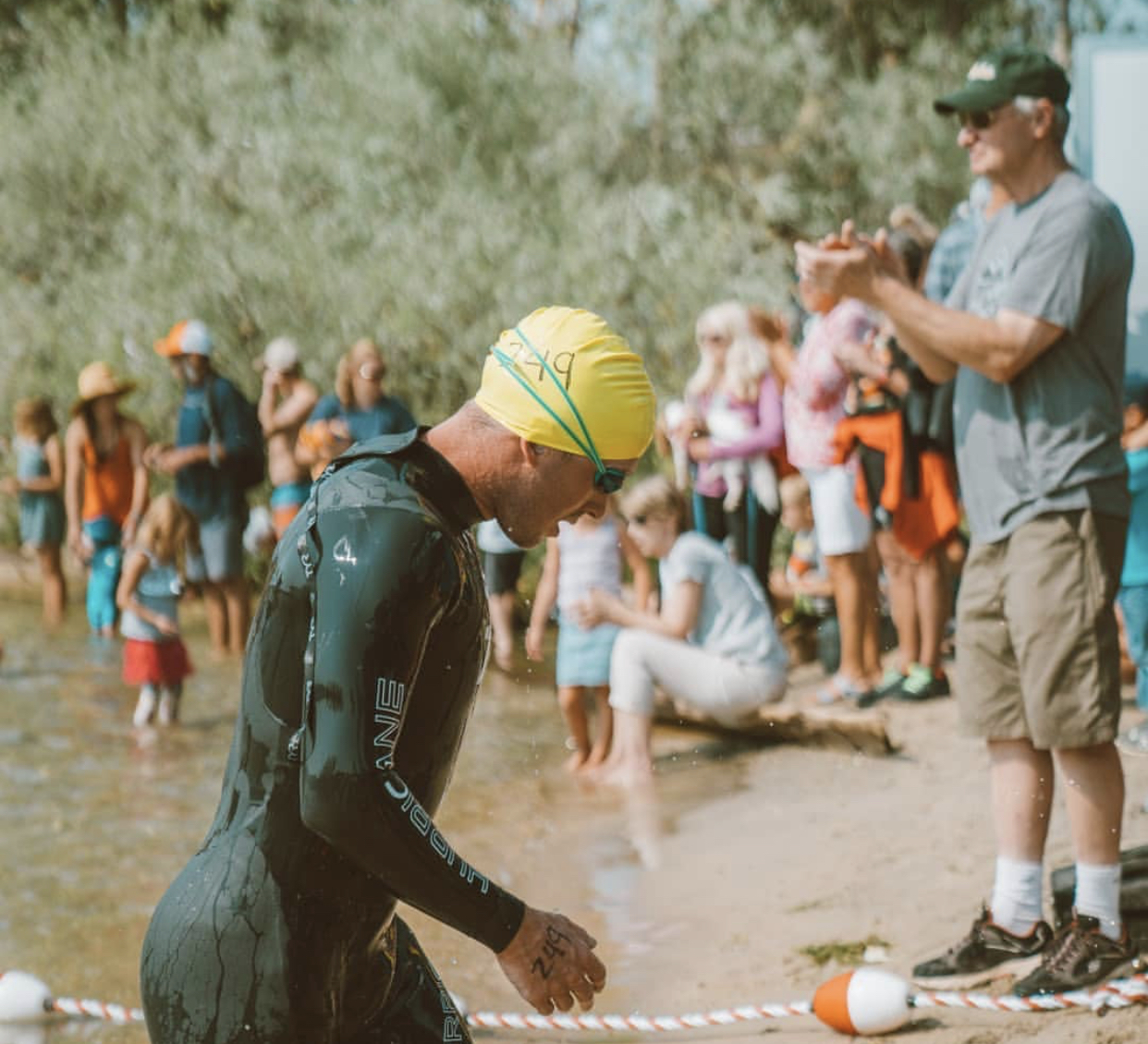
7. Make sure you have the right gear
I'll be honest, for a sport where two of the three disciplines are pretty much free, you can spenda lotttt of money on triathlon. However, for your first one, I recommend being smart about how you spend your money. Go for quality products that are going to last and aren't going to hold you back, without getting carried away and going for the top-of-the-line gear.
Here's a list of my first Half Ironman essentials:
- Wetsuit: The TYR Hurricane Cat 1 was recommended to me and I've been very impressed by it. The range of motion in the shoulders is amazing while the material is durable and fast. Here's ourfull guide to finding the best Ironman wetsuit for you.
- Tri suit: I recommend a one piece suit for comfort and performance. Make sure to get one with high-performance, quick-dry fabric, and pockets on the back for your fuel. I've been thrilled with my Zone 3 Mens Activate Plus.
- Cycling shoes: These Pearl Izumis have served me very well. Great combination of weight, durability, and price!
- Fitness watch with GPS: You can spend a lot of money on these, make sure you think about what youactuallyneed. I went for the Fitbit Ionic as it's a bit more affordable, has everything I needed, and I had a lot of friends on Fitbit already.
- Swimming goggles: I recommend mirrored ones like these as they perform better outside when the sun is a factor. Doesn't hurt to get a second pair with clear lenses if you're planning to predominantly train in the indoor pool.
- Skratch: I love this stuff. Personally a big passionfruit and lemon lime guy, but I've never had a flavour I didn't like!
- Clif Gels: These are a saving grace on the bike. I've had chocolate, mocha and raspberry and would recommend all of them.
- Clif Bloks: Mountain Berry is my go-to, but a mixed pack is a good way to find your favourites. They also have ones with caffeine if that's your jam.
For a complete Ironman Race Day Packing List, check out ourguide.
8. Don't try anything for the first time on race day
One more time for impact: Don't try anything for the first time on race day.
This goes for both your gear and your nutrition. Don't wear anything new for racing. Make sure to get a few runs and bikes in with your tri suit and a few swims in with your wetsuit during your training. The last thing you want is to realize your slick new tri suit chafes horribly when you're 5k into the bike.
When it comes to nutrition, fuel your race using the same products you used to train. Having GI issues during the race sounds like a nightmare…best to play it safe!
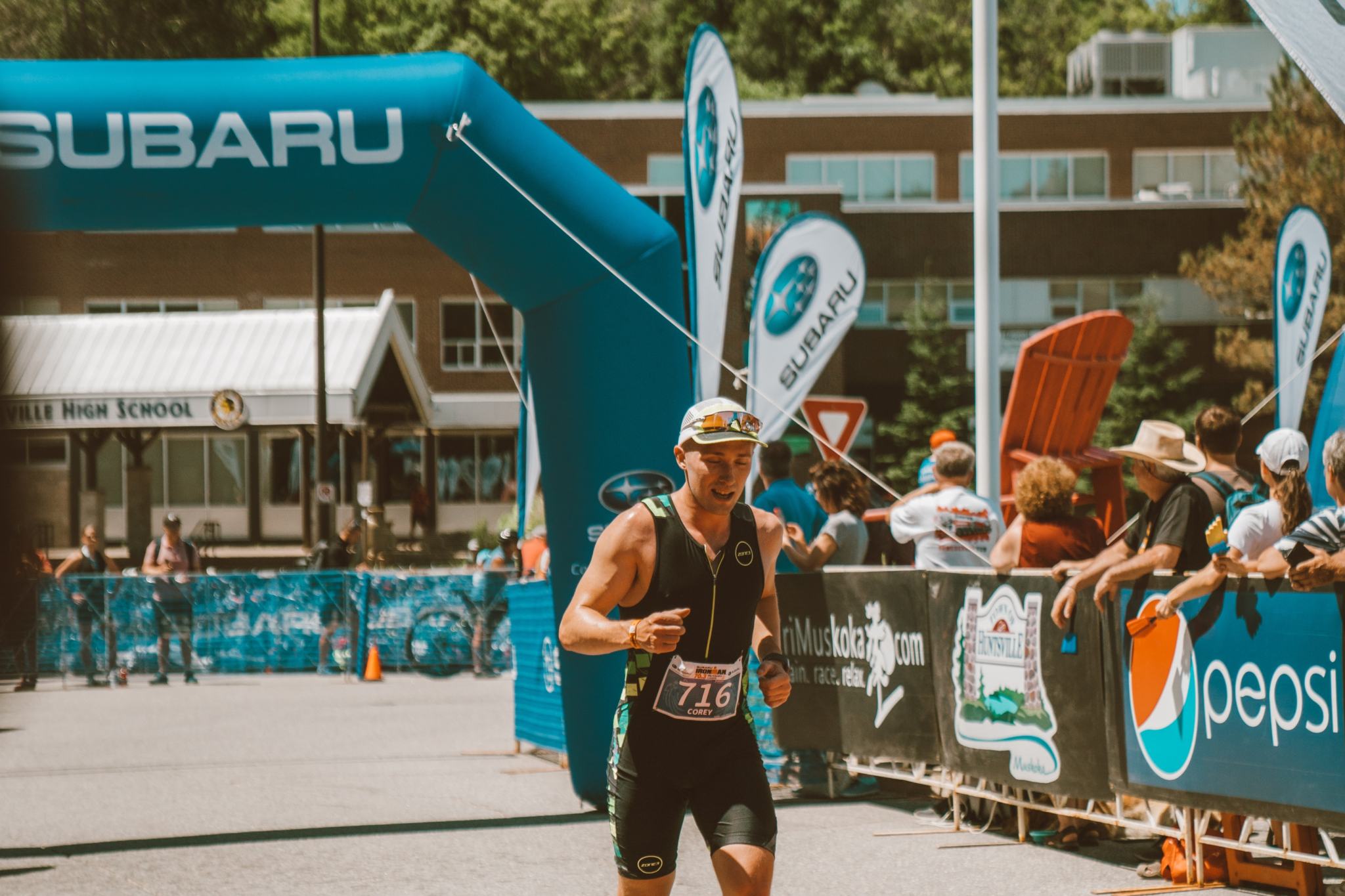
9. Taper…taper hard
Take your taper seriously. Your body will go through a lot during gruelling training weeks, so give it the time it needs to recover in order to be in top shape for race day.
I started my taper two weeks out from race day. In the first week, I significantly reduced the intensity of my workouts, going out for short swims, bikes, and runs where I focused on technique only.
In the second week – the week leading up to race day – I pretty much shut everything down. Exercise wise, all I did was two yoga classes just to stretch out my muscles and get everything aligned.
During this time I also focused on eating well and eating a lot, keeping hydrated, and banking sleep. I slept over 8 hours every day leading up to the race as it's near impossible to get a good sleep the night before the race.
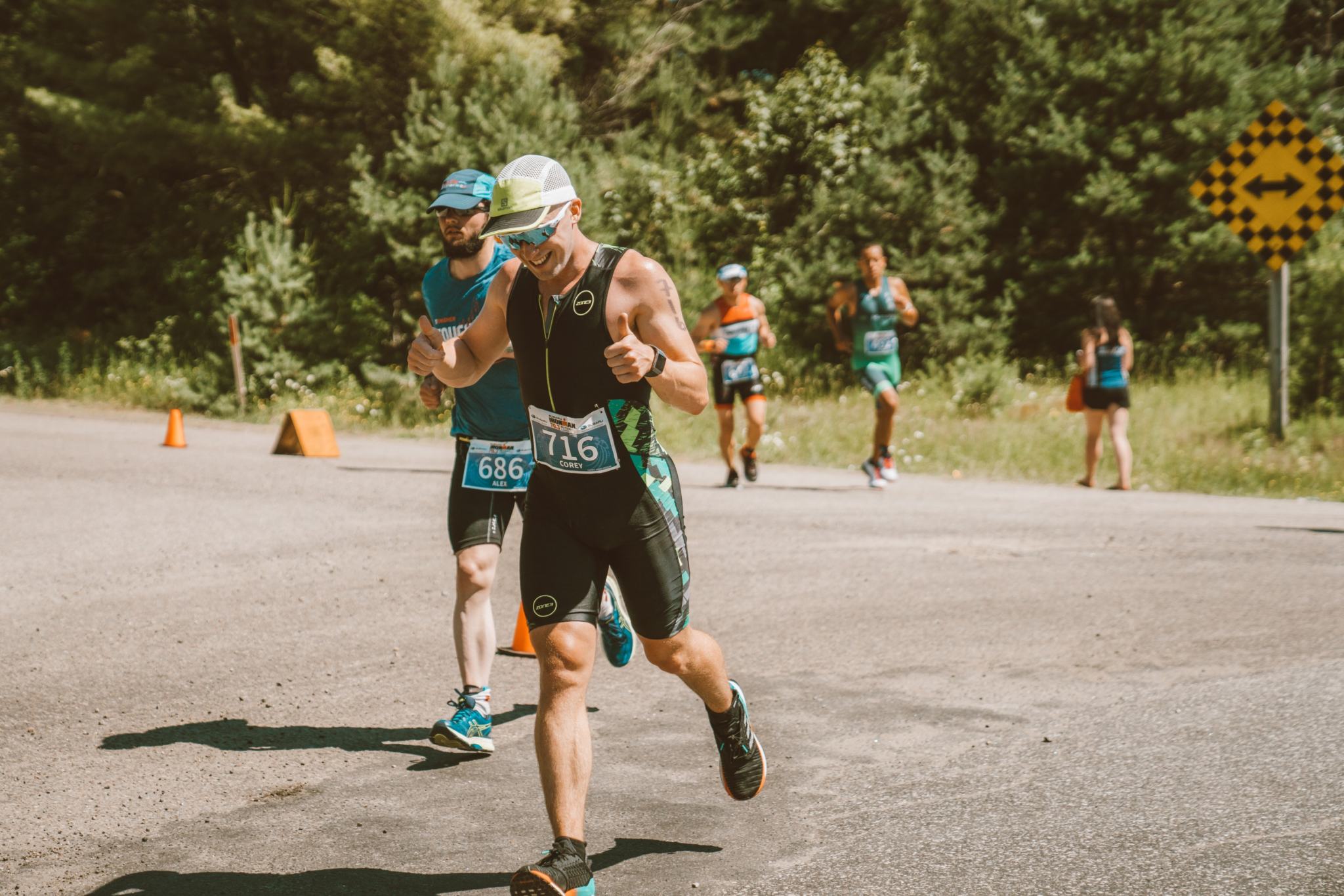
10. It's your first Half Ironman, Enjoy It!
Enjoy the journey! Make the most of your training. There will be good days and bad days. When it hurts, embrace the suck. But overall, have fun with it! Completing your first Half Ironman is an amazing accomplishment that you should be proud of.
Plus, if you smile, it hurts less!
Source: https://www.voyageandventure.com/advice-for-your-first-half-ironman/
0 Response to "How Easy It is to Do Half Ironman"
Post a Comment